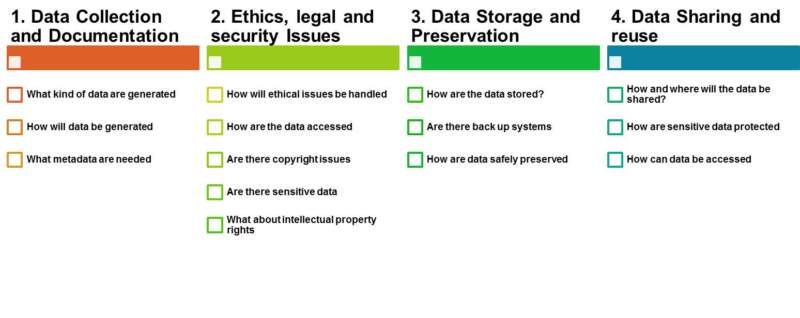Businesses face numerous challenges. One of the biggest of these challenges is the need to keep an eye out for improvements to keep the business viable and grow the customer base. To make your company stand out from the pack, you need to invest more than money. You also need to put a significant amount of time and effort into it to set yourself apart from your competitors.
Many successful business owners have one thing in common – the ability to see the big picture. Businesses of all kinds, including design firms, need to continually assess their business models, keeping an eye on what is working and what isn’t.
If you want to take your firm to the next level, here are some key areas you should start considering and applying your operations:
Sales Prospecting & Closing
Table of Contents
Sales prospecting is the first step in the sales process. It involves searching for potential clients among your leads and identifying qualified buyers. It is an essential part of a sales strategy that provides businesses with potential customers who have a good chance of making a purchase.
Here’s how you can master sales prospecting:
- Research and prioritize your leads: The goal is to segment quality leads and decide whether attempting to close a deal with them is worth your time and energy. The quality of leads you attract tells you a lot about the way you run your business. If your reps are gathering the right information, you tend to attract high-quality leads. Prioritize these leads in your outreach and start conversations with them.
- Have a strong decision-maker as your leader: A decisive decision-maker takes actions that deliver the best results for your company. They have an open, unbiased mind and make rational decisions based on solid data and analysis.
- Reach out and schedule meetings: You need a lot of persistence in sales prospecting. Selling your solutions requires you to converse with qualified prospects and do negotiations that can go on for days, weeks, or even months. Your initial outreach’s immediate goal should be to introduce your product and schedule a demonstration. Once you’re done with this, you can start selling your product. Follow up with every qualified lead until there is a definite yes or no.
- Confirm our customer’s needs: Your solution exists to fill a need, and it’s your job to identify which of your customers’ needs are going to be solved by your product. Discussing your customers’ needs with them and setting their expectations about your solution early will help strengthen your chances of making the sale.
- Address objections and close the sale: You are going to face some tough questions from your potential clients. These could include queries about pricing, features, and limitations. Once all these questions are properly answered you move toward closing the deal. That’s when a solid graphic design invoice will further impress your future customers.
A solid sales prospecting and closing process will make sure your design firm will have a constant flow of projects lining up.
Client Communication
When you are running a service-based business, communication is everything. You get to understand the real value of communication in crucial times like these, not just with your clients but to your overall audience.
It takes a lot of effort to develop even one proper customer relationship, and in a service-oriented business such as design, customer relationships are everything. You should prioritize communicating with your clients effectively and making sure you’re on the same page when it comes to desired results.
Be honest about your process when you communicate with your prospects. Be upfront about the tools, process, structure you are following. That will help you manage client expectations. If you use special tools that make your process smooth but a bit costlier, mention that. For example, many businesses use a website builder and that helps them deliver faster. Mentioning such tools would simplify your current and future communications.
When you are able to give your prospects a realistic assessment of the results they can expect from you, you have a better chance of turning them into clients. You also need to track each conversation you have with your leads, and to do that, you and your team need to be well versed in CRM.
You might be asking, what is a CRM? CRM, which stands for Customer Relationship Management, is the process of supervising interactions with potential customers and existing clients. It allows your company to build stronger relationships with both prospects and clients by analyzing customer data and interactions across different sales channels to enable you to offer the right services at the right time.
Aside from implementing a CRM system for your business, you can also use the following tips to help you improve your client communication skills:
- Practice active listening
- Be clear & concise
- Present project plan
- Ask questions
- Set a schedule
- Schedule routine communications
- Stay relevant and self-correct
- Make things easier for them
Remember: The time spent on good communication is never time wasted!
Review Management
With the rise of social media and online review platforms, customers now have more channels where they can express their opinions about your business. Your reputation can easily be affected by a few not-so-glowing reviews, especially when you manage well on social media. This is why you need to master review management as soon as possible.
Reviews on sites such as Yelp, Google, or Facebook give you a glimpse into customer sentiment. They will help you understand what your customers are loving and the aspects of your business that could use a little work. As much as you welcome positive reviews, you should also welcome negative reviews as an opportunity to improve your products or customer service. Replying to both positive and negative reviews will show your customers that you take their suggestions seriously and are working non-stop to give them the best service possible.
Proper review management will help you engage with your customers by responding to ratings and feedback, funnel negative customer feedback to your customer relationship team, acknowledge team members who have done a good job, and persuade customers who give positive reviews to put in a good word for you among their contacts.
Internal Communication & Task Management
An effective internal communications strategy is a critical aspect of a company’s success. In a digital workspace, having a functioning internal communications strategy can help boost your business’s ability to attract customers and drive sales.
Whether your firm is an industry giant or a boutique design studio working in a specific niche market, success can only be reached through the collective efforts of individuals, teams, and departments. Internal communication tools will help you coordinate tasks and projects. In addition, if your work is spread across the country or globe, using the proper remote work software can help you organize your team and schedule their activities, making sure that every resource is used optimally.
You can take certain practices to ensure that everyone in your design firm follows the same internal communications standards:
- Lead by example: If you wish your employees to share information and communicate openly with their colleagues, you need to do the same thing. If your team sees that you’re not communicating crucial information to them, they might keep you in the dark about certain things too
- Maintain the free flow of ideas: An organization that practices open and transparent communication leads to the free flow of ideas amongst team members and management. Your design team will feel motivated and inspired to share unusual, out-of-the-box ideas without feeling criticized or ridiculed.
- Eliminate confusion & be on the same page: When you assign tasks and responsibilities, communicating it properly to your team will eliminate confusion, ensure that everyone is on the same page regarding specifications and timelines, reduce rework, and lead to higher productivity levels and better employee satisfaction.
- Establish a regular process: Regular communication with your team will help them navigate around roadblocks, allocate resources as needed, and straighten out the workflow. It will result in tasks completed on schedule.
- Communicate through online tools: Use some of the best productivity apps available online to synchronize your team’s tasks and availability. By using online productivity and reporting tools, you can make your team more efficient and responsive to client needs.
Think about it, most of the mishaps happen due to confusion or insufficient information about the task. For a business where quality deliverability is so crucial, sored internal communication is a must.
Data Management & Analysis
All companies, regardless of size, must create a data management strategy to help them harness their data, visualize information, and help them make effective decisions.


Source: Uzh.ch
Data management is defined as the methods used to safely, reliably, and cost-effectively process, keep and use data. The primary objective of data management is to help organizations legally use the information to make better strategic choices. These choices will eventually increase revenue, minimize expenses, and maximize profit.
Having a properly organized social intelligence platform that utilizes comprehensive, accurate data is crucial to a constantly-growing business. As organizations expand, a well-defined data management plan is more critical than ever.
Finance Management
Financial management refers to the strategic organizing, planning, directing, and controlling an organization’s financial affairs. To run a profitable business, you need to have knowledge of financial management.
New business managers and leaders should learn how to create financial statements and analyze them carefully. Those statements give you a glimpse into the financial condition of your business. By using that data, you can plan and execute projects to generate revenue or minimize expenses.
Good financial management practices help ensure that transactions are recorded and maintained correctly. These include basic financial functions like balancing checkbooks and reconciling expense reports, through to the more complex tasks such as yearly financial audits and tax preparation.
The functions of financial management include the following:
- Estimation of capital requirements
- Determination of capital composition
- Choice of sources of funds
- Investment of funds
- Disposal of surplus
- Management of cash
- Financial controls
Here are some of the reasons you need to make your design firm’s financial management practices as airtight as possible:
- It will help your organization ensure that it has enough funds to operate and pay its employees.
- These practices help your organization identify equipment, real estate, and employee training programs that will result in maximum returns for the business.
- It ensures that the company makes sound financial decisions after careful consideration of all the relevant factors.
- It makes the company look better in the eyes of stakeholders, clients, and potential investors.
Presumably, the main reason your business exists is to turn a profit. Keep one eye on your finances at all times to ensure they’re always healthy.
Bottomline
Running a design business can be daunting initially, especially if you’re managing people and balancing budgets for the first time. However, things get easier as you learn and master the finer points of business management.
While your services are different from what other companies and industries offer, there are a lot of management practices you can apply to help you run your design firm professionally, keep the revenue coming in, and help expand your client portfolio.





